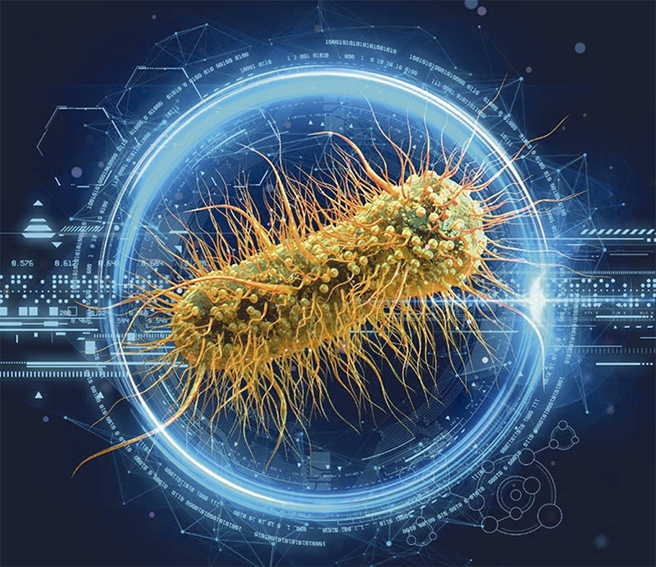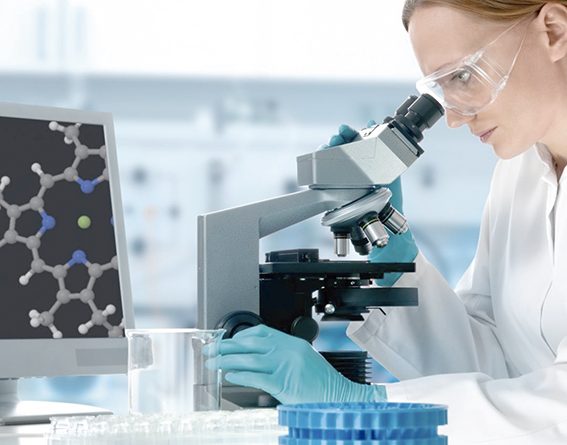El revolucionario método con el que se descubrió un SUPER antibiótico / Powerful antibiotic discovered using machine learning for first time
Capaz de matar a las bacterias más resistentes y peligrosas.
Un poderoso antibiótico capaz de matar a algunas de las bacterias resistentes más peligrosas del mundo fue descubierto por un equipo de investigadores utilizando inteligencia artificial.
Es la primera vez que se encuentra un antibiótico de esta manera y, según expertos, se trata de un gran avance en la lucha contra el creciente problema de la resistencia a los antibióticos.
Para encontrarlo, se utilizó un poderoso algoritmo que analizó más de cien millones de compuestos químicos en cuestión de días.
El compuesto descubierto fue capaz de matar 35 tipos de bacterias potencialmente mortales, dijeron los investigadores.
Desde hace años, están aumentando las infecciones resistentes a los antibióticos. Se estima que cerca de 700.000 personas mueren en el mundo cada año por problemas directamente vinculados a esta clase de bacterias.
Si los antibióticos se toman de forma inapropiada, las bacterias dañinas que viven dentro de nuestro cuerpo pueden volverse resistentes a ellos, y eso quiere decir que los medicamentos pueden no funcionar cuando realmente los necesitamos.
Sin embargo, encontrar nuevos antibióticos es un gran desafío.
“Nueva era”
“En términos de descubrimiento de antibióticos, esto es absolutamente pionero”, señaló Regina Barzilay, investigadora principal del proyecto del Instituto de Tecnología de Massachusetts (MIT).
El descubrimiento fue hecho usando un algoritmo inspirado en la arquitectura delcerebro humano.
Los investigadores lo entrenaron para analizar la estructura de 2.500 drogas y otros compuestos para encontrar aquellos que tenían las mejores características antibacterianas para matar a la bacteria E. coli.
Luego seleccionaron a 100 candidatos para probarlos físicamente y así descubrieron uno al que llamaron halicina.
“Creo que este es uno de los antibióticos más poderosos que se ha descubierto hasta la fecha”, dijo James Collins, bioingeniero del equipo del MIT.
“Queríamos desarrollar una plataforma que nos permitiera aprovechar el poder de la inteligencia artificial para marcar el comienzo de una nueva era de descubrimiento de antibióticos”.
Peter Bannister, presidente del panel de atención médica de la Institución de Ingeniería y Tecnología, dijo que el método utilizado ya estaba “bien establecido” en la investigación médica.
“El mismo enfoque ha ganado popularidad en el desarrollo de nuevas terapias, como productos farmacéuticos y, en el caso de esta investigación, en antibióticos en los que el reconocimiento de patrones (…) puede ayudar a clasificarlos entre una gran cantidad de moléculas”, dijo a la BBC.
“Este estudio va más allá de la simulación teórica y presenta resultados preclínicos, que son esenciales junto con los ensayos clínicos posteriores para demostrar claramente la eficacia y seguridad de estos nuevos medicamentos ‘descubiertos por la inteligencia artificial'”.
Los investigadores añaden que el uso de máquinas para acelerar el descubrimiento de fármacos puede ayudar a reducir el costo de generar nuevos antibióticos en el futuro.
Avances
La publicación del estudio tiene lugar pocas semanas después de que una molécula descubierta por IA se convirtiera en la primera en su tipo en utilizarse en ensayos en humanos.
Esta se utilizará para tratar pacientes con desorden obsesivo compulsivo (OCD, por sus siglas en inglés).
El uso de la tecnología de inteligencia artificial dentro del campo de la atención médica está aún en su infancia, pero se están haciendo grandes avances.
Recientemente, un estudio afirmó que la IA es más precisa que los médicos a la hora de diagnosticar cáncer de mama con mamografías.
Un equipo internacional, que incluye investigadores de Google Health (un servicio de información personal centralizado enfocado a la sanidad) y el Imperial College de Londres, diseñó y entrenó a un modelo de computación con radiografías de cerca de 29.000 mujeres.
El algoritmo superó a 6 radiólogos en la interpretación de las mamografías.

Powerful antibiotic discovered using machine learning for first time
Team at MIT says halicin kills some of the world’s most dangerous strains.
A powerful antibiotic that kills some of the most dangerous drug-resistant bacteria in the world has been discovered using artificial intelligence.
The drug works in a different way to existing antibacterials and is the first of its kind to be found by setting AI loose on vast digital libraries of pharmaceutical compounds.
Tests showed that the drug wiped out a range of antibiotic-resistant strains of bacteria, including Acinetobacter baumannii and Enterobacteriaceae, two of the three high-priority pathogens that the World Health Organization ranks as “critical” for new antibiotics to target.
“In terms of antibiotic discovery, this is absolutely a first,” said Regina Barzilay, a senior researcher on the project and specialist in machine learning at Massachusetts Institute of Technology (MIT).
“I think this is one of the more powerful antibiotics that has been discovered to date,” added James Collins, a bioengineer on the team at MIT. “It has remarkable activity against a broad range of antibiotic-resistant pathogens.”
Antibiotic resistance arises when bacteria mutate and evolve to sidestep the mechanisms that antimicrobial drugs use to kill them. Without new antibiotics to tackle resistance, 10 million lives around the world could be at risk each year from infections by 2050, the Cameron government’s O’Neill report warned.
To find new antibiotics, the researchers first trained a “deep learning” algorithm to identify the sorts of molecules that kill bacteria. To do this, they fed the program information on the atomic and molecular features of nearly 2,500 drugs and natural compounds, and how well or not the substance blocked the growth of the bug E coli.
Once the algorithm had learned what molecular features made for good antibiotics, the scientists set it working on a library of more than 6,000 compounds under investigation for treating various human diseases. Rather than looking for any potential antimicrobials, the algorithm focused on compounds that looked effective but unlike existing antibiotics. This boosted the chances that the drugs would work in radical new ways that bugs had yet to develop resistance to.
Jonathan Stokes, the first author of the study, said it took a matter of hours for the algorithm to assess the compounds and come up with some promising antibiotics. One, which the researchers named “halicin” after Hal, the astronaut-bothering AI in the film 2001: A Space Odyssey, looked particularly potent.
Writing in the journal Cell, the researchers describe how they treated numerous drug-resistant infections with halicin, a compound that was originally developed to treat diabetes, but which fell by the wayside before it reached the clinic.
Tests on bacteria collected from patients showed that halicin killed Mycobacterium tuberculosis, the bug that causes TB, and strains of Enterobacteriaceae that are resistant to carbapenems, a group of antibiotics that are considered the last resort for such infections. Halicin also cleared C difficile and multidrug-resistant Acinetobacter baumannii infections in mice.
To hunt for more new drugs, the team next turned to a massive digital database of about 1.5bn compounds. They set the algorithm working on 107m of these. Three days later, the program returned a shortlist of 23 potential antibiotics, of which two appear to be particularly potent. The scientists now intend to search more of the database.
Stokes said it would have been impossible to screen all 107m compounds by the conventional route of obtaining or making the substances and then testing them in the lab. “Being able to perform these experiments in the computer dramatically reduces the time and cost to look at these compounds,” he said.
Barzilay now wants to use the algorithm to find antibiotics that are more selective in the bacteria they kill. This would mean that taking the antibiotic kills only the bugs causing an infection, and not all the healthy bacteria that live in the gut. More ambitiously, the scientists aim to use the algorithm to design potent new antibiotics from scratch.
“The work really is remarkable,” said Jacob Durrant, who works on computer-aided drug design at the University of Pittsburgh. “Their approach highlights the power of computer-aided drug discovery. It would be impossible to physically test over 100m compounds for antibiotic activity.”
“Given typical drug-development costs, in terms of both time and money, any method that can speed early-stage drug discovery has the potential to make a big impact,” he added.


Debe estar conectado para enviar un comentario.